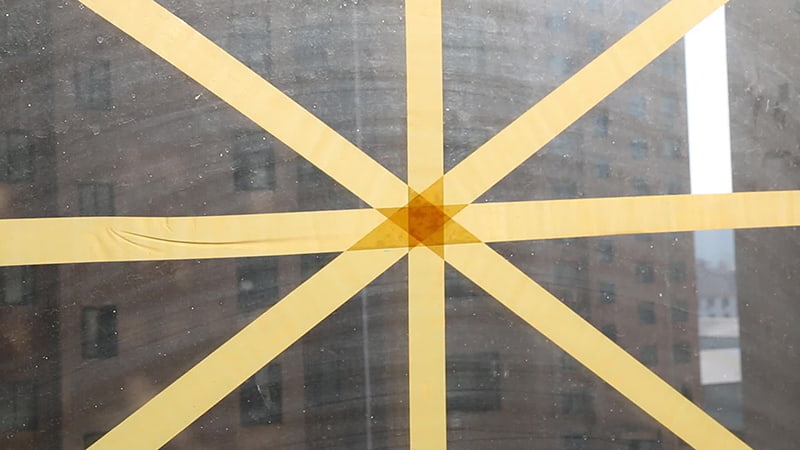Focus on the dynamics of enterprises,Grasp the forefront of the industry, Lead new directions of development,Empower the future with prosperity.
The typhoon season has just entered, and the owner group is in trouble again: Some people posted embarrassing photos of climbing up the window sill to stick "rice" stickers on them, complaining that "it costs money and effort every year to stick the stickers, and the window frames have to be repaired after the typhoon." Others posted screenshots on their mobile phones - there was a strong storm outside the window, and the "doors and windows have been automatically locked" message on the APP was particularly reassuring, and there was not even fog on the glass.
This scene is quietly becoming popular: smart doors and windows that once appeared only in high-end residences are now gradually entering ordinary households with the help of the "double carbon" policy and technological upgrades. According to data from the "2025 Doors and Windows Industry White Paper" of the China Construction Metal Structure Association, In 2024, the sales volume of smart doors and windows in South China will increase by 127% year-on-year, and Guangdong will become the core consumer province in the country with a market size of 3.82 billion yuan. "Smart wind resistance" has become a new trend in decoration.

Vernacular dismantling: 3 core skills of smart doors and windows
Don’t be put off by the “sense of technology”, its capabilities are actually very down-to-earth:
● Storm Warning Division
The window frame is embedded with air pressure sensing strips and rain sensors, and the locking point automatically presses down when the wind speed reaches seven levels. When the raindrops touch, it rises to hide the drainage channel within 0.8 seconds. The window sash is tightly sucked on the strips - equivalent to sticking a circle of invisible waterproof tape. Some owners in South China estimate that after replacing the windows, they will save about 6,000 yuan in glue and window frame repair costs every year in seven years (estimated based on an average annual maintenance cost of 800 yuan).
● Patron Saint of Silence
Using three layers of asymmetric thickness glass, the middle soft film can "eat" low-frequency resonance. For office workers and the elderly, the noise of crying and square dancing next door can be effectively blocked, making lunch breaks more peaceful. For ordinary household use, the sound of outdoor air conditioners and traffic can be reduced by more than 45dB (equivalent to the noise change from a busy city to a library).
● whole house connector
Forgot to close the window? Remote one-click lock via mobile phone; when the door or window is pried, alarm information will be pushed simultaneously to the property management and mobile phone.联动空调与地暖更节能:夏天自动通风减少空调运行,冬天配合保温玻璃锁温,采暖能耗可降 40%,按 100㎡户型估算,年电费约省数百元。
Technology Revealed: It’s not “electric windows”, it’s really “smart”
Many people think that smart windows are just "electric switches". In fact, according to the "General Technical Conditions for Smart Doors and Windows" GB/T42891-2023 standard, 3 hard-core conditions need to be met to meet the standard:
● Perceptive: Real-time monitoring of temperature, humidity, wind speed and other data through multi-dimensional sensors, with a response delay of ≤1 second;
● Understand habits: Supports customized sleep ventilation, automatic locking when leaving home, and other modes, and some models can learn the user's schedule;
● Can be linked: It needs to be compatible with mainstream smart home ecological protocols to achieve coordinated control of security and home appliances.
The mainstream products in the industry are also equipped with energy-saving black technology: for example, models that can automatically adjust the glass transmittance can reduce 99% of ultraviolet rays, and when linked with floor heating, energy consumption can be reduced by another 15%, accurately meeting the requirements of the "double carbon" policy.
Buying Guide: Adaptation List for Seven Major Areas and Key Points to Avoid Pitfalls
Selection guide by region
--Northeast/Inner Mongolia severe cold areas: Choose passive house products with a K value ≤ 1.2, and check that the wind pressure resistance is ≥ 9;
--North China/Huanghuai Gas District: Priority is given to gas linkage function, motor warranty ≥5 years;
--Rainy areas in East China/South China: The water tightness reaches the national standard level 3 or above, and a hidden drainage structure is selected;
--Northwestern sand and dust area: Air tightness ≥8, equipped with removable and washable dust-proof gauze;
--Southwestern Meiyu District: With automatic ventilation and anti-mildew mode, the rubber strips are made of weather-resistant material for more than 10 years.
3 tips for avoiding pitfalls across the country
--Check certification: GB/T42891-2023 test report is required, focusing on sensor sensitivity;
--Ask after-sales service: Hardware warranty is ≥5 years, and motor failure will be repaired within 48 hours;
--Calculation of subsidies: 20% of the selling price in Shanghai (up to 2,000 yuan), 15% for renovation of old residential areas in Beijing, and 10% for existing housing in Xi'an.

National market trends
In 2024, the matching rate of smart doors and windows for newly built commercial houses will reach 19.2%, and the renovation rate of existing houses will increase by 34.6%. With the penetration of 5G and AIoT technologies, the penetration rate of voice control models is expected to exceed 65% in 2025. We are currently in a window period where the technology is mature and the price is affordable.
As climate change intensifies, home safety is no longer just a decoration consideration, but a forward-looking investment in future life. A high-quality smart system door and window is like wearing a "smart protective suit" for your home. No matter how the wind and rain change outside, your home will always be a warm and dry haven.
After the heavy rain, a rainbow finally appears. But smart owners have already prepared for the next heavy rain. Because true peace of mind is not to panic and respond when the storm comes, but to prepare for a rainy day when the storm is calm.